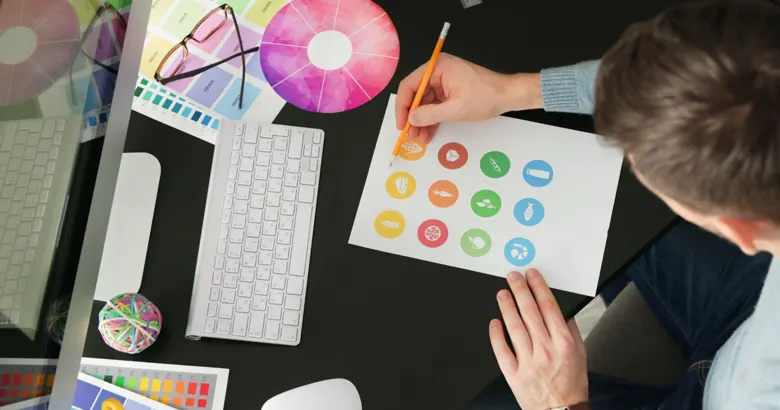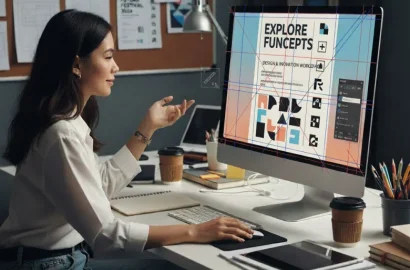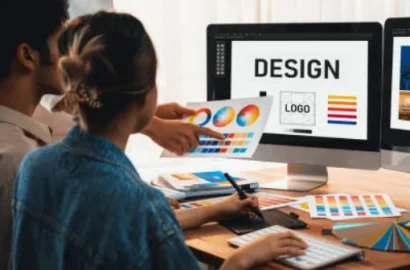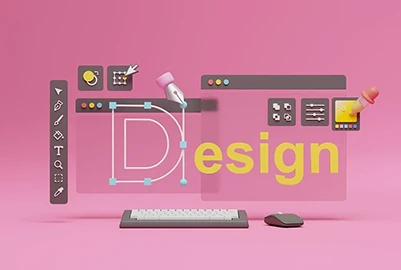With the growing importance of branding in establishing consumer relations, logo design has emerged as a popular profession. Read on to learn how pursuing a logo design course can benefit you along with tips on how to choose one.
Have you found yourself drawn to the iconic Nike tick while browsing for shoes? Does the half-bitten Apple logo evoke a sense of luxury and trust instantaneously in your mind? Well, you’re not alone. Serving as a symbol of a brand’s ethos and performance, logos are pivotal in building customer loyalty and instant recall. Effective logo design quietly influences our consumer decisions, shaping perceptions even when we’re unaware.
In today’s fast-paced world, where capturing consumer attention is paramount, logo design has become a critical skill. Many companies are investing in rebranding initiatives centered around impactful logo designs, offering abundant opportunities for logo designers to shine.
In this article, we delve into how upskilling through a logo design course can empower both newcomers and seasoned designers to broaden their skill sets and unlock new professional prospects.
Contents:
- Importance of logo design
- How a logo design course benefits you
- What to look for in a logo design course
- Career opportunities in logo design
- The future scope of logo design
Interested? Let’s dive right in!
Understanding the Importance of Logo Design
Right from when logo design was first used in the 1300s to today’s digital landscape, it is impossible to ignore the far-fetched impact logos have on a user’s perception of the brand. At a very basic level, logos capture attention and create a sense of association. Here are some other reasons why logo design is important.
Lends a Visual Identity to Brands
The very foundations of branding today rely on the idea of quick association and connection with the client. And what’s a better way to tell a story than an attractive, recognizable mark? Hence, the colors, shape, typography, and design of a logo serve as the foundation of a brand’s narrative.
Helps Navigate Market Competitiveness
With market competition as aggressive as today, your brand gets one chance to convey to customers its unique offerings. A logo that adequately reflects a brand’s principles and purpose can effectively display why they’re not like its market competitors, creating a unique space in the minds of customers.
Promotes Recall and Differentiation
Ever looked at a yellow ‘M’ and thought of McDonald’s? That’s a logo design done right. A unique and good logo design holds the power to create instant association for customers, ensuring they remember the business even if they forget the name. A logo in such cases operates as a source of identification and memorability for the customers.
Builds Brand Trust
Logos allow for a sense of consistency for customers, fostering a feeling of trust and loyalty in the long run. It signals to customers the unchanging quality and values of the brand. The popular tick of Nike on a product would encourage a customer to trust the product given the brand’s consistency and values.
How Can A Logo Design Course Benefit You?
If you’re looking to become a professional logo designer, a course is an excellent way to onboard the skills you need. In fact, a logo design course can also prove handy for design enthusiasts looking to pursue the field as a hobby. Read on to learn how pursuing a formal logo design course can benefit anyone interested in the field.
Develop fundamental design skills
An industry-relevant logo design course is one of the best ways to develop a dynamic design skillset. Considering the fact that logo design is very closely related to branding, a designer must be familiar with a few foundational principles, like simplicity, originality, versatility, clarity, and brand alignment.
Similarly, familiarity with color theory and psychology plays an essential role in becoming a proficient designer. This, coupled with an understanding of imagery and text, basics of branding and visual identity, as well as proficiency in tools are key skills that a logo design course would ideally cover.

Familiarity with the Logo Design Process
Contrary to popular belief, the logo design process incorporates structured steps that greatly contribute to the quality of a design. A formal course can familiarise you with the essential elements of the process, ensuring you are industry-ready. Below is an overview of the 6 steps of this process that a professional should be familiar with.
Evaluating the Brand Identity
This includes understanding the brand as an entity. Questions on brand personality, goals, voice, beliefs, and value propositions are analyzed at this stage. Take note, as a primary step, this stage sets the tone for the rest of the process and must not be ignored.
Conducting Market Research
Once you have the basics of your brand identity in place, it is time to explore the market and know how your competitors position themselves. This is also an essential step to understand what logo techniques are the most prevalent in your industry and the kind of customers that dominate it.
Shortlisting Visual Elements
Next is the application of your research through trial and error. This is the stage when you determine the medium for your logo, for instance, if it would be displayed on packaging, website, or any other channel. Based on that and your research you must shortlist the basic shape and design foundational to your brand identity.
Making Rough Sketches
It is important to try out design concepts through rough sketches before zeroing in on the final design. This stage allows you to experiment and combine different elements to find what works best for your brand identity, ensuring the end product is unique and original.
Prototyping Drafts
Now that you have a bunch of ideas to refer to, it’s time to take your logo to the next level. It’s important to note that what looks pretty on a sketch might not deliver the same appeal in digital design. Prototyping different versions hence becomes important as it allows you to experiment with different colors, effects, and typography before settling with what best serves you.
Testing and Redefining
Testing and feedback play a very important role when it comes to design. The same goes for logo design. Before you finalize a logo, it is important to run it through a sample audience to gauge if it aligns well with the brand’s overall identity.
Practical application through projects and assignments
A hands-on skill like logo design requires practical exposure to gain proficiency. Formal courses in this regard can go a long way in building proficiency through project work and class assignments. Take AND learner Akhil N’s Brand Identity Project, for reference, which allowed learners to experiment with their creative geniuses on hypothetical briefs, contributing both to their portfolio and exposure.
Building a professional portfolio
A strong portfolio is essential for landing freelance gigs or full-time positions in logo design. Project work and assignments in a formal course typically contribute to an industry-relevant graphic design portfolio, offering tangible work to showcase during recruitment. When building a portfolio, incorporate both the final designs and your process for a complete picture. Moreover, you can sell logos and earn money by creating a portfolio on graphic design marketplaces.
Industry exposure through design experts
Many logo design courses are taught by experienced professionals who can offer insights into the industry. They may share real-world examples, discuss current design trends, or provide tips for working with clients. Interacting with experienced instructors and fellow students can expand professional networks.
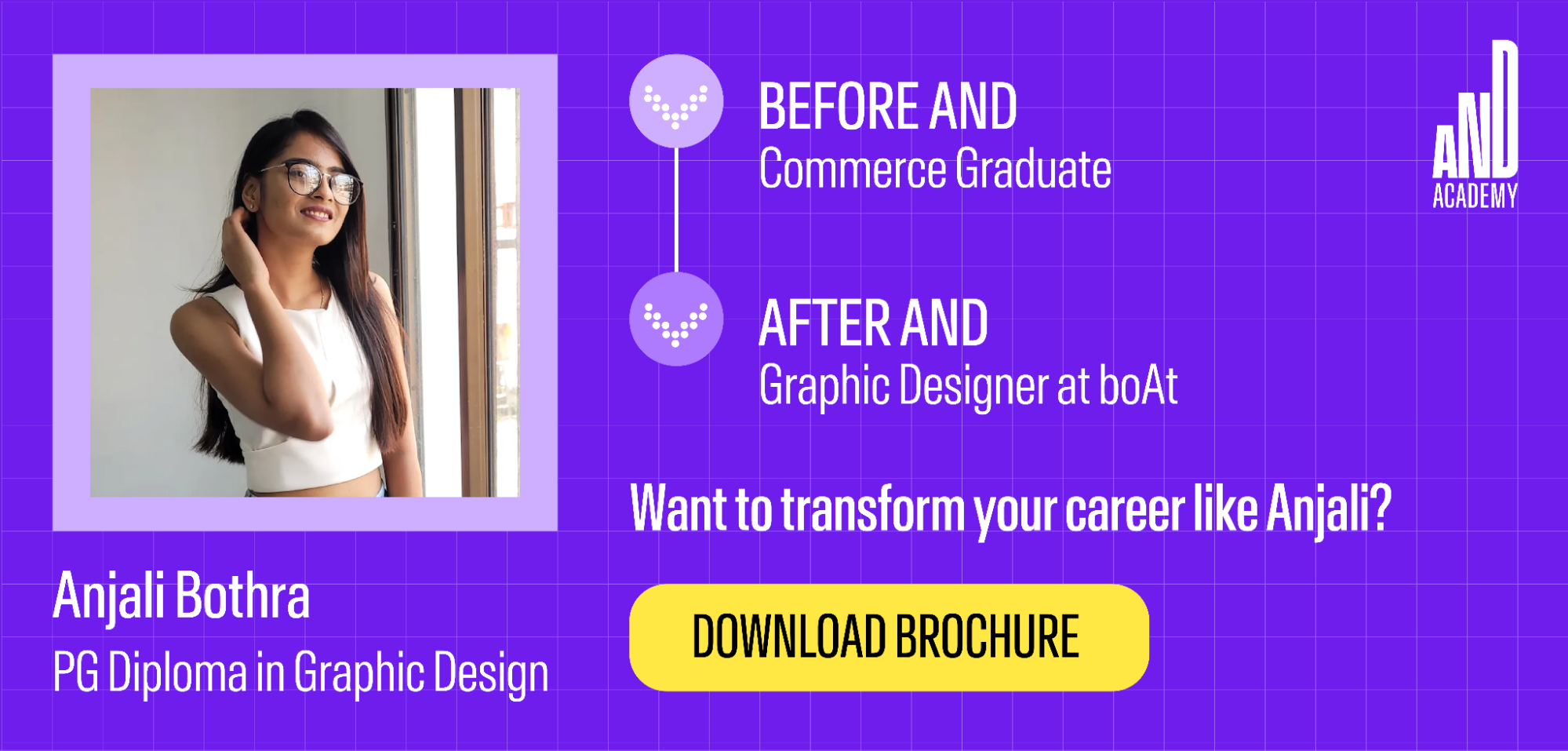
What to Look for in a Logo Design Course
When considering a logo design course, it’s essential to look for certain key features to ensure that you get the most out of your learning experience. Here are some factors to consider:
Your personal goals and ambitions
Often a neglected aspect, your personal goals and ambitions play an integral role in your choice of course. If you wish to pursue the field professionally and are looking to work in a corporate environment, a course that provides networking and placement opportunities and covers principles of branding would work best for you. Conversely, if your interest lies in exploring logo design as a hobby or venturing into freelancing, opt for self-paced courses with a strong emphasis on practical, hands-on learning.
Budget constraints
Factor in the cost of the course relative to the value it delivers. Seek courses that strike a balance between affordability and quality instruction. While enrolling in a course entails a long-term investment, the upfront costs can be substantial. One strategy to manage this is by considering the course’s credentials and duration. Opting for a part-time program or a certificate program can effectively mitigate budget constraints while still providing the same benefits as a full-time program.
Curriculum and Industry Relevance
Look for a course that covers essential design principles, typography, color theory, logo design process, and branding concepts. The course should also provide practical training on relevant software tools like Adobe Illustrator and Photoshop. Ideally, the course should also be taught by experts with a background in graphic design, branding, or a related field, with real-world experience creating logos for clients or companies.
Learning format and learning style
The role of learning preference is significant as it directly impacts how effectively you acquire and retain the skills and knowledge offered. For instance, if you thrive in an interactive environment, you might prefer a course with live instructor-led sessions and peer collaboration. However, if you prefer flexibility and autonomy, a self-paced online course with ample practical exercises could be more appealing.
Project work and Networking opportunities
Courses with practical, hands-on projects allow you to apply the concepts you’ve learned and build a portfolio. Check if the course includes assignments where you can create logos for different industries or hypothetical clients. Courses that offer additional support resources such as forums, online communities, or industry networking can also help gain a dynamic skillset.
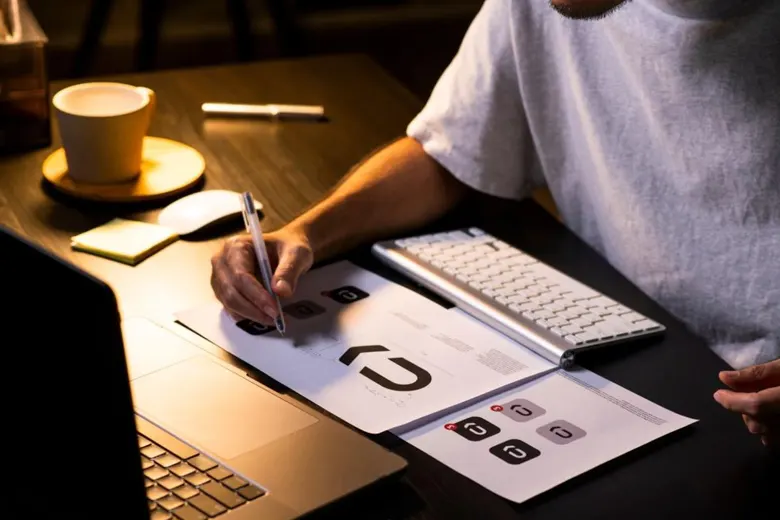
Career Opportunities in Logo Design
Career opportunities in logo design are diverse and can lead to rewarding professional paths. Some common career opportunities include:
In-House Logo Designer
In-house logo designer is one of the most common job profiles available for designers to pursue. As such, they typically ensure that all visual elements, including logos, are consistent across various platforms and materials, such as websites, marketing collateral, product packaging, and signage. This involves conceptualizing ideas, sketching designs, and refining them into final digital formats.
Designer With an Agency or a Studio
Marketing and advertising agencies frequently hire logo designers to develop logos and branding materials for their clients’ campaigns. A professional logo designer with significant experience can also work in design agencies alongside UI/UX and product designers.
Freelance Logo Designer
Freelance work opportunities have emerged as a popular choice over the years for design enthusiasts looking to kickstart their journeys. This can prove to be a particularly excellent option for newcomers with less experience to get industry-relevant work and build their portfolio.
Branding Consultant
Since logo design is closely associated with branding, experienced logo designers can also work as brand consultants. This includes working closely with clients to understand their business objectives, target audience, competitive landscape, and overall brand vision and developing brand strategies for the development of visual identities.
Teaching and Education
The academics and education space is yet another professional field for such designers to explore. Experienced logo designers may transition into roles as educators or trainers, sharing their knowledge and expertise with aspiring designers through teaching, workshops, or online courses.
The Future Scope of Logo Design
With technological advancement and the rise of AI, the scope of logo design is all set to move beyond its traditional limitations. Concepts of consumer behavior and knowledge of industry trends are likely to dominate the routine responsibilities of a logo designer in the near future. Here’s a glimpse into the potential future trends and opportunities in logo design:
Generative AI
AI-powered design tools and generative design algorithms will soon revolutionize the logo design process, enabling designers to explore a vast range of variations quickly and efficiently. However, it is important to note that while AI will, in the coming years, make the process more efficient, it cannot completely replace logo designers. Effective branding and unique design would require logo designers to use AI as a means of increasing efficiency.
Influence of Virtual and Augmented Reality in Logo Design
Influence of VR and AR environments is all set to make logos more dynamic and interactive. It will soon allow logo designers to create animated or responsive logos that adapt to the user’s actions or the context of the virtual or augmented environment, enhancing engagement and brand storytelling.

Minimalism and Responsive Design Trend
The trend towards minimalist and simple logo design is likely to continue, driven by the need for logos to be easily recognizable, scalable, and adaptable across various contexts. Logo designers will also need to consider responsive design principles to ensure that logos remain clear, legible, and impactful across a wide range of devices and screen orientations.
Personalisation
With advancements in data analytics and AI technologies, personalized and customized logos are already on the rise. This trend will likely take a leap wherein logos would be designed to not only resonate with individual consumers or target audience segments but also provide a more tailored and relevant brand experience.
Multi-channel and multi-sensory branding
Multi-channel and multi-sensory branding is likely to expand the role of logo design beyond visual identity to experiences that engage consumers across various touchpoints and sensory modalities. Netflix’s use of audio along with its logo as an opening scene is one example of how such designs incorporate multi-sensory branding for different channels.
Next Steps
We hope our blog was helpful in understanding why a logo design course can give a much-needed boost to your career. In case you need more information, here are some additional resources related to logo design and graphic design that you can consider.
- Watch this session by design veteran and AND’s Academic Head, Prachi Mittal, and our Course Lead, Soumya Tiwari.
- Talk to a course advisor to discuss how you can transform your career with one of our courses.
- Pursue our Graphic Design courses – all courses are taught through live, interactive classes by industry experts, and some even offer a Job Guarantee.
- Take advantage of our scholarship and funding options that come with our courses to overcome any financial hurdle on the path of your career transformation.
Note: All information and/or data from external sources is believed to be accurate as of the date of publication.

